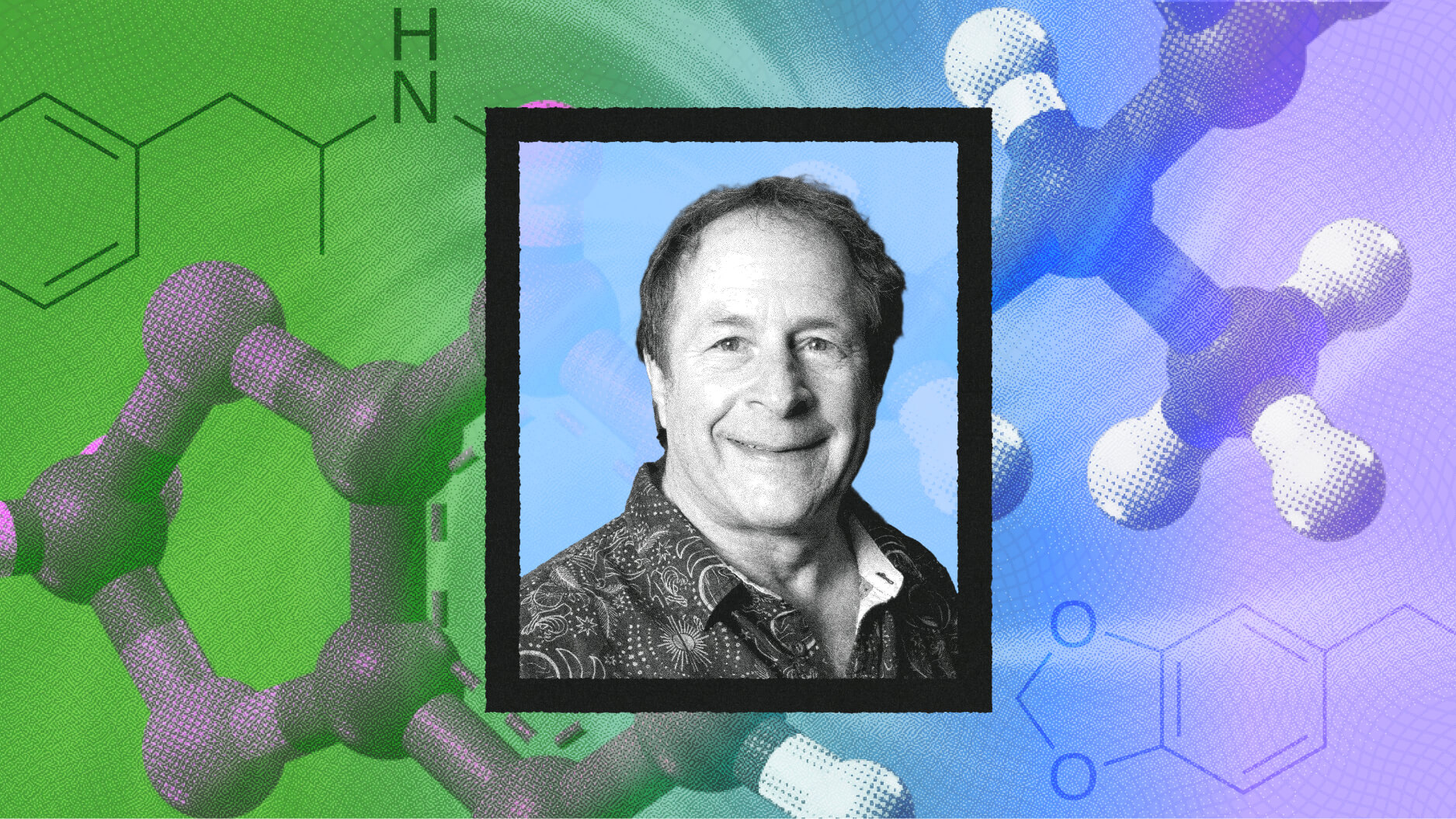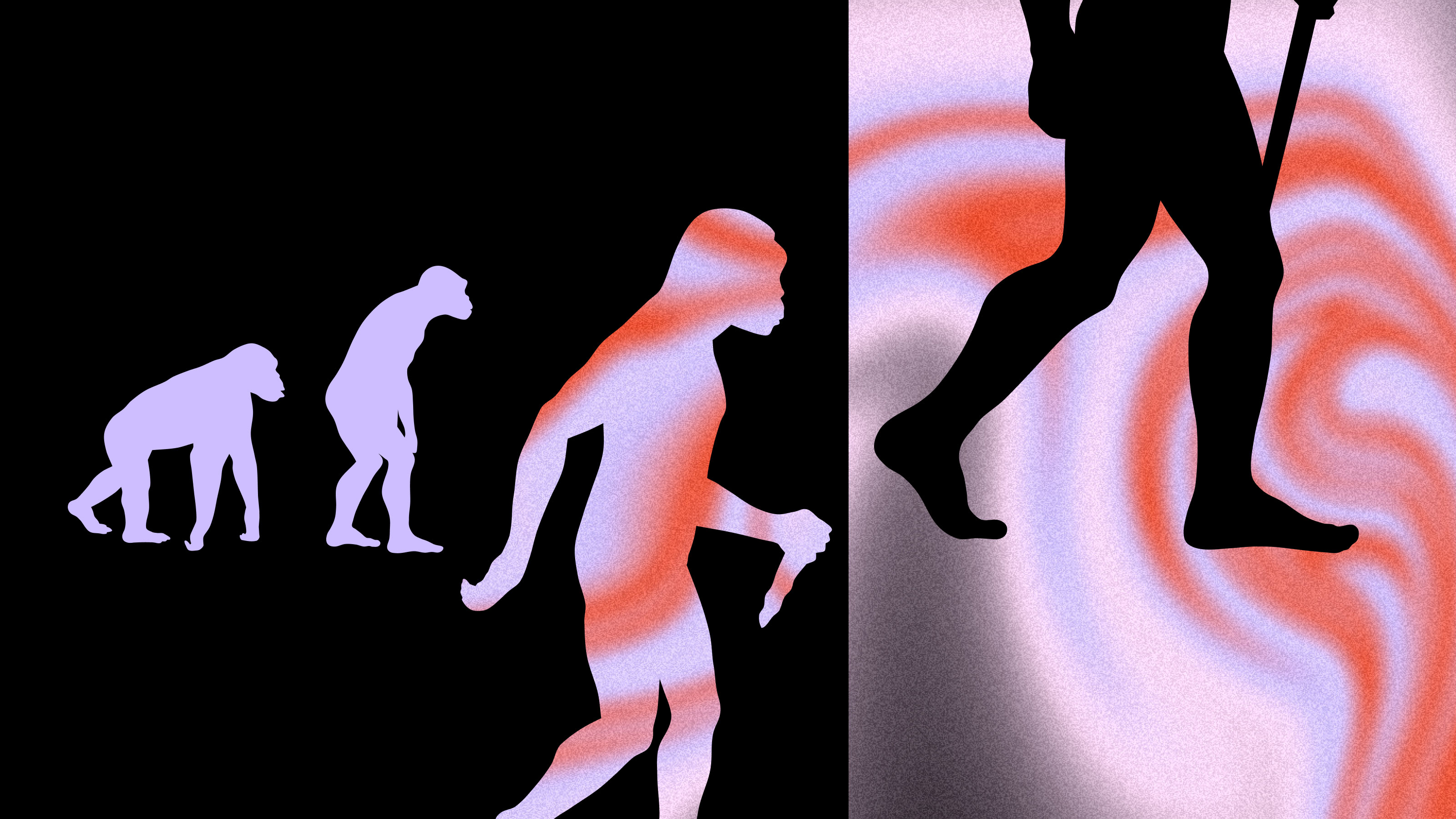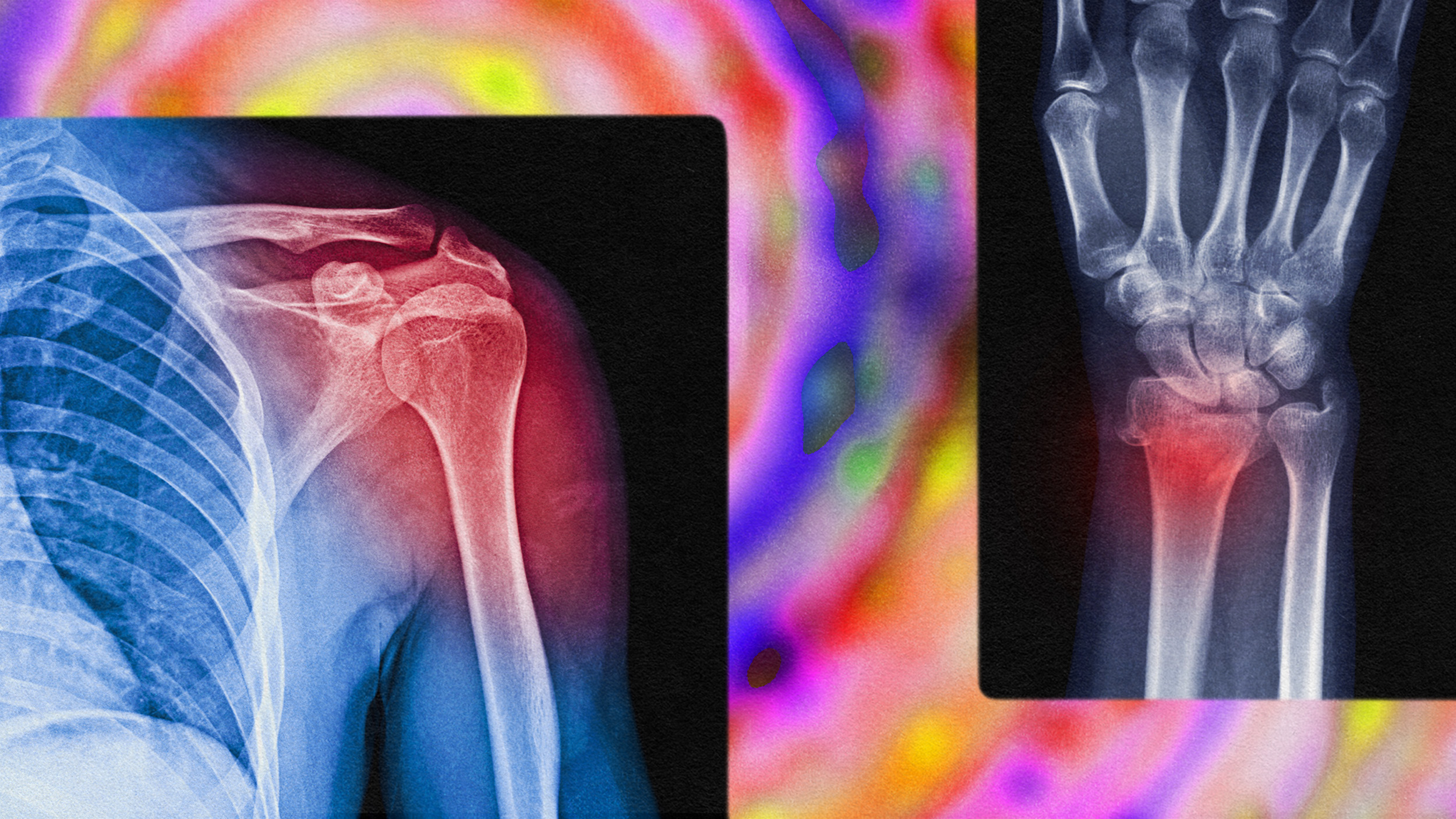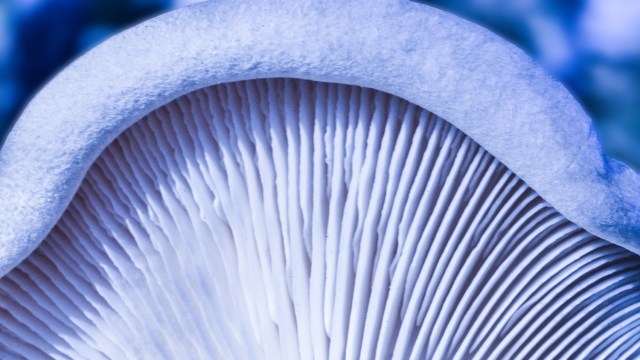MDMA and Ayahuasca in Ritual and Therapy

Photo by Wade Davis/Getty Images
- Dr. Charles Grob began clinically studying ayahuasca and MDMA in the nineties, the first researcher to be granted FDA approval.
- Grob has also conducted studies on psilocybin and end-of-life care, which garnered great results.
- The future of psychedelics research is moving quickly thanks in large part to Grob’s decades of clinical work.
In 2002, the prestigious journal, Science, published a research paper written by a team led by Johns Hopkins researcher, George Ricaurte, stating that MDMA can be neurotoxic in a single dose. Ricaurte had long been critical of MDMA; his research in the eighties helped the US government decide to label it a Schedule 1 drug, despite the trial judge stating that it should remain legal for clinical testing. (The newly appointed DEA head overturned the judge’s decision.)
Ricaurte’s research on squirrel monkeys seemed to seal the coffin: ecstasy can permanently damage your brain in a single dose. The meme that information spawned persists today. The problem is that Ricaurte used methamphetamine, not MDMA. Though the study was retracted by Science, Ricaurte has not gone to great lengths to admit his mistake. In fact, he claimed the facility that sent him the drug mislabelled the vials; the facility says that’s bogus.
At every step along the way, Dr. Charles Grob has provided a clearer story. The professor of Psychiatry & Biobehavioral Sciences and Pediatrics and Director of the Division of Child and Adolescent Psychiatry at Harbor-UCLA Medical Center testified in front of Congress in the eighties; he has written extensively about the science and politics of ecstasy, among other psychedelics. As the first researcher granted FDA approval to clinically test ayahuasca and MDMA, Grob’s work provided the foundation of the renaissance in psychedelics research occurring today.
I recently chatted with Dr. Grob about the history and future of research in this exciting field. We discussed the necessity of ritual in understanding the uses of certain psychedelics, as well as potential therapeutic applications being studied now. No proper history of psychedelics research would be complete without a discussion of Grob’s groundbreaking work. He was a pleasure to chat with about the ongoing reformation of our mental health model and the role psychedelics will play in it.
Below is an excerpt of our conversation; you can read the full transcript here.

Dr.Charles S. Grob, Director, Division of Child and Adolescent Psychiatry at HarborUCLA Medical Center in his office in Torrance November 14, 2011 has conducted research on hallucinogens as treatment for dying cancer patients with depression and anxiety.Photo by Mark Boster/Los Angeles Times via Getty Images
Derek: Your work in the realm of psychedelics in general and MDMA specifically has been so important over the decades. Having taken an interest in this field in the early seventies thanks to Stanislov Grof’s work, how do you feel about the current state of psychedelics and how people are really taking to them now?
Charles: I’m very pleased that the level of research has significantly improved. There are more studies being developed; more investigators jumping through the necessary hoops, getting all the necessary approvals and funding. We’re seeing a renaissance in psychedelic research. That’s very encouraging and very validating. It’s essentially what I and my colleagues perceived many decades ago: that psychedelics held great promise and potential as a very novel treatment model, and, in particular, applicability for conditions that don’t respond to conventional treatments.
Derek: You were around when MDMA became a Schedule 1 drug. Do you remember at that time why the government took such a hard stance on this particular substance?
Charles: MDMA became scheduled in the mid-eighties. From the early to the mid-eighties, MDMA had gone from a virtually unknown drug or a drug known only to a relatively modest number of psychotherapists who were using it in treatment. Then it suddenly became available out in the public, particularly at dance clubs. I think that trend started in Dallas, Texas in the early eighties. Its use rapidly increased and, most assuredly, alarmed public health authorities and drug enforcement authorities who then moved to put the brakes on.
There was also some early controversy about whether or not MDMA might be neurotoxic to serotonergic neurons in the brain. I think much of this concern was later put to rest, but it was a factor in the decision by the DEA in the mid-eighties to schedule it. Actually, the administrative law judge for the DEA recommended that MDMA be placed in a category where there were some restrictions, but where it could still be utilized for treatment. However, his decision was overruled by the director of the DEA at that time.
It was made a Schedule 1 drug, where except for a three-month period in late 88 / early 89 when a Harvard psychologist named Lester Grinspoon appealed the scheduling. Except for that three-month hiatus, it’s been a Schedule 1 drug ever since.
Derek: That was also partly due to George Ricaurte’s work, which I know you’ve been critical of. Could you speak to whether or not MDMA has any neurotoxic effects, and if not, what are some of the best therapeutic applications you’ve seen evidence of so far?
Charles: The neurotoxicity debate became very vociferous through the 1990s. It really slowed considerably the development of human research in general. Myself and some of my colleagues were highly critical of some of the studies contending to demonstrate that MDMA was neurotoxic in humans. However, our voices were not heard until the early two-thousands when the Ricaurte group published an article in Science, a very prestigious journal, reporting that when high doses of MDMA were injected repeatedly into squirrel monkeys. These squirrel monkeys were eventually sacrificed and their brains autopsied and examined. Not only was their serotonergic damage identified, but also damage to the dopaminergic neurotransmitter system.
The implications of that were very worrisome because dopamine neurotoxicity might very well lead to a high risk of developing Parkinson’s disease over time. However, there’s never been a clinical correlation between MDMA and Parkinson’s. What’s more, a year after this article was published in the early two-thousands, a retraction was published in Science stating that it actually was not MDMA that the monkeys had been injected; rather it was methamphetamine. Evidently there had been a mislabeling of the vials containing the drug. Whether or not that was the actual reason, I don’t know. But that was the reason given for why it was methamphetamine and not MDMA. And after that point, there’s been very little interest or even activity trying to demonstrate that MDMA causes neurotoxic brain damage.
Of course, that being said, I think it’s important to point out that with a drug like MDMA, which does have very strong central nervous system effects, less is best. It’s not a lifestyle drug, in my opinion. If used at all, perhaps only sparingly, and for an important reason, such as treatment of PTSD, which Michael Mithoefer’s group has shown MDMA to be quite effective with.
Dr. Charles Grob- Ayahuasca & Hallucinogens- Clinical studies- Past Present and Futurewww.youtube.com
Derek: There are a lot of studies happening now and people becoming more interested. There’s also a lot of pharmaceutical interest in this. If MDMA is proven to be really good at low dosages for depression or anxiety, is the R & D going to be worth it to put those on the market if they’re not going to make the same amounts of money from consumers as from other treatments currently being used?
Charles: In regards to the treatment for depression, I think psilocybin is a more interesting case. It might need to be only administered a couple of times in the course of ongoing psychotherapy. It may be that a drug like psilocybin has sustained efficacy. This needs to be demonstrated in formal research studies.
In terms of the pharmaceutical industry, it’s a shame that it comes down perhaps to a turning a profit or turning a greater profit. There’s certainly plenty of that within the mainstream pharmaceutical world. The issue is the fact that conventional treatments seem to have only limited efficacy. Upwards of up to half of individuals treated with SSRIs do not have satisfactory responses. There is a compelling need to find more effective treatments.
That’s one reason why ketamine has suddenly become a drug of interest. The problem with ketamine is that while it does appear to have very robust acute short-term antidepressant effects, those antidepressant effects appear to wane after a few weeks. Whereas with a classic psychedelic like psilocybin, it may very well be that there is a sustained antidepressant effect over many months or even a year or more or indefinitely. The evidence or the data that’s been reported to date and various studies— including my own study treating individuals at the end of life with reactive anxiety and depression—has been very positive. Similar studies at Johns Hopkins and NYU, which came after our study but which got permission to use a slightly higher dose, had even a stronger drug effect size.
When it comes down to the straight forward issue of whether drugs like this can be effective and can be contained safely in the treatment setting, the research to date has proved to be very supportive. Where it’s going to go in the future, I don’t know. There are some entrepreneurs who are investing a lot of money into developing a psilocybin treatment model. There may be expectations of deriving profit from this. That raises a variety of issues, including ethical issues, but we’ll first have to see if it really does work over the long haul as more individuals are studied under rigorous research conditions.

Fresh Colombian magic mushrooms legally on sale in Camden market, London.Photo by Photofusion/Universal Images Group via Getty Images
Derek: With psilocybin and you’ve also done research in ayahuasca, you probably recognize it’s very hard to decouple the psychedelic from the ritual context. Do you think that these substances could have similar effects when you take it out of that context and have a different model?
Charles: Especially with ayahuasca, it’s very important to understand how it’s been used traditionally by native peoples in the Amazon basin. The use of ayahuasca has also been utilized by syncretic churches, particularly in Brazil, which have also established themselves in this country. From our studies and my observations, I felt ayahuasca is far more safely contained and far more likely to be effective in regards to its potential antidepressant effects or overall psychological wellbeing effects if contained within a highly structured context.
The Brazilian religions may at times not be the best fit for individuals coming from North American culture. Nevertheless, we can learn from what they’ve done and we can also learn the value of a ritual structure, regardless of what the ritual is or even what the belief system is. These are not just psychiatric medicines; these are psycho-spiritual medicines, which makes them highly unusual from the get-go. But I Taking that into account, it will be important to develop ritual structures that acknowledge and optimally utilize that psycho-spiritual range of effects.
Derek: This specific work is part of what has created this renaissance of psychedelic studies, kicked off when Michael Pollan wrote about the Hopkins study a few years ago. What do you think that the mushrooms offer end-of-life patients when they’re at this point in their life and they’re facing the end, what do they get out of it?
Charles: Well, first of all, the set and setting have to be optimized. That’s your starting point. Once that has been put into place and patients have been properly screened and prepared, a psilocybin treatment appears to have a remarkable facility to address the existential crisis that individuals have at the end of life. At the end of life, an individual’s sense of self starts to erode. He or she loses connection with that person he’s always or she’s always been.
Psilocybin appears to reconnect them and instill a renewed sense of meaning and purpose into their lives even with the limited time span remaining. The alkaloids in the mushrooms appear to have an uncanny facility to go right to that great existential question. Individual experiences are of various types, but the outcomes are fairly consistent: they have a restored sense of self and a restored sense of meaning and purpose to their lives.
—
Stay in touch with Derek on Twitter and Facebook. His next book is Hero’s Dose: The Case For Psychedelics in Ritual and Therapy.





